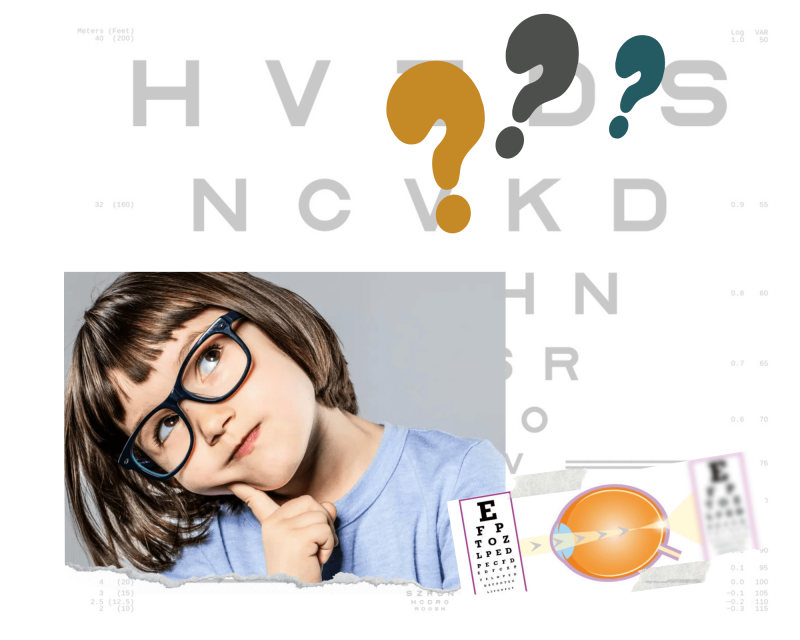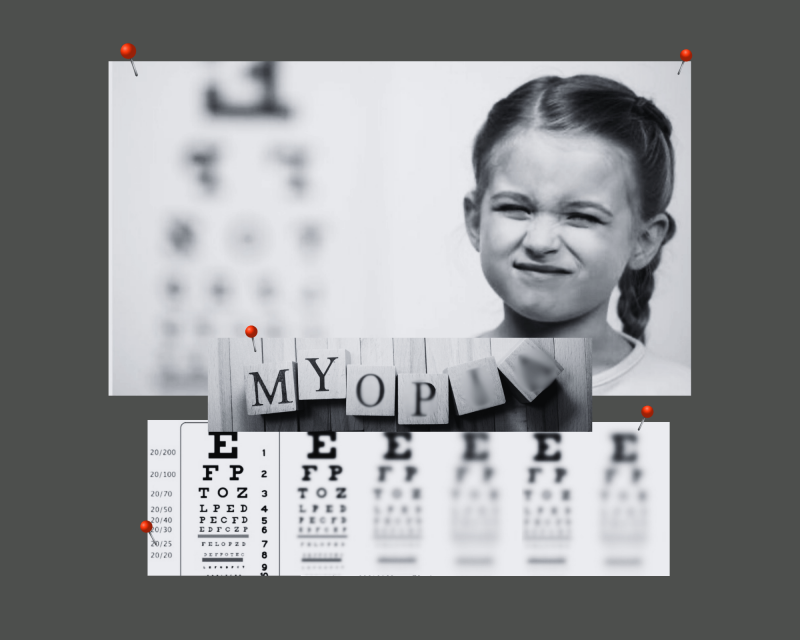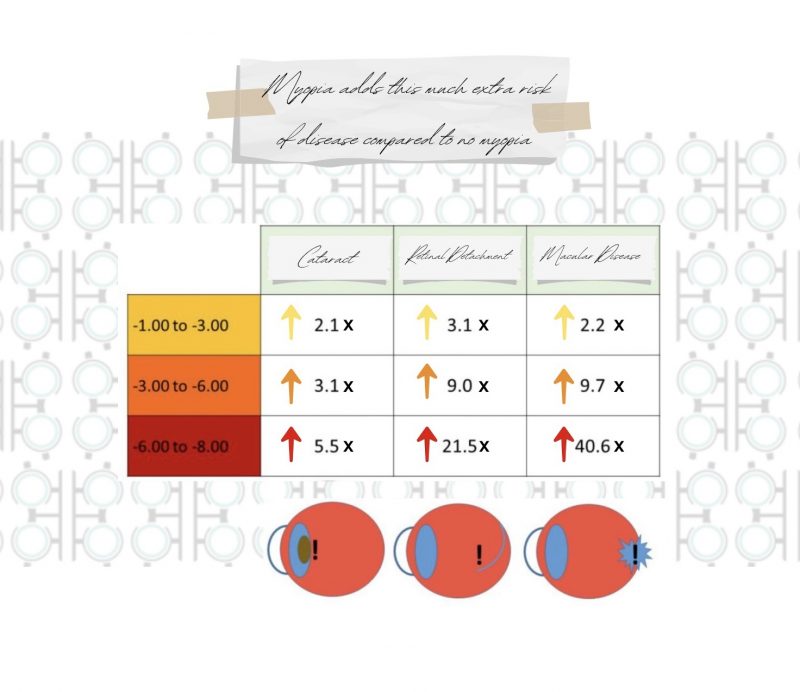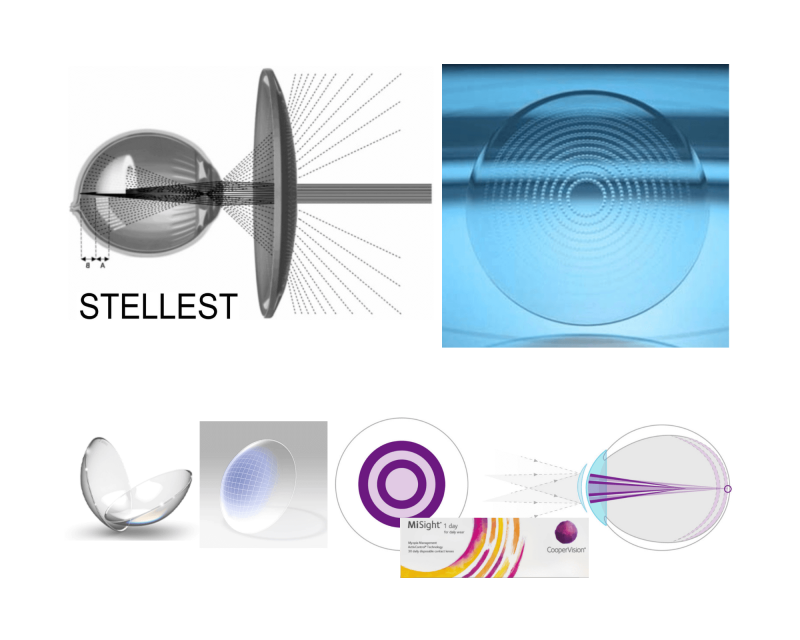Myopia Management is a newly emerging field in Optometry and now forms part of the portfolio of services we offer.

What is myopia?
Myopia, otherwise called “short-sightedness”, is blurred vision caused by either eye being too long front to back, or the front light bending surface too curved and powerful. The image created falls short of the retinal surface, making it blurred on the retina, thereby making things from afar seem out of focus.

Why should we manage Myopia?
We are facing a dramatic increase in the number of children developing myopia, driven by lifestyle and genetics. It is predicted that by 2050 half of the world’s population will be myopic. Over many more people needing to use glasses or contact lenses to function, the bigger worry is that myopic eyes are at an increased risk of eye disease over the rest of the population as we age.

This is why it matters…
Demonstrated here are the increased risks a person with incrementing levels of myopia has of developing cataract, retinal detachment and myopic macular disease over somebody without myopic eyes.
It is why we need to try our best to limit myopia’s progression, and also why every diopter of prevented myopia counts.

What is Myopia Management?
Currently there is no cure for myopia, but we can do something proactive to help lessen it’s impact. If we can slow the progression of a child’s myopia in the early years, they will take less myopia into adulthood, negating some of these increased risks of eye disease.
Research has been busy looking at why some children’s eyes drift further and further into myopia, and have been able to formulate strategies and interventions to actively put this progression in check. It has been found that we can identify when a child is only six years of age as to whether they are at a low, moderate or high risk of going on to become a higher myope.
The backbone of Myopia Management is early identification of those at risk, lifestyle advice, close monitoring and, if needed, the supply of dedicated specialist spectacle lenses or contact lenses.
What are the interventions?
A myopic child will need correction of one form or another. The convenience of Myopia Management is that both of the intervention options we provide are still simply a spectacle lens or contact lens – all be it a very clever and highly specialist variety of spectacle and contact lens.
This is our choice of spectacles lens intervention - Essilor’s Stellest lens
Stellest is one of the newest generation of Myopia-controlling spectacle lenses. A sophisticated lens with 11 rings of 1021 aspheric ‘lenslets’, each 1.12mm in diameter, changing geometry in each ring, that create the innovative “shield focus”. This is the magic. This shield focus switches off the eye’s want to continue elongation and become more myopic.
A two-year clinical study trial (randomised control) published its data in March 2022 with compelling results. Over the study period, it found that children who wore their Stellest lenses 12 hrs a day, every day, had 1.00D less prescription than their counterparts with regular spectacles. The World Health Organisation has stated that for every 1 diopter of less myopia correlates to 40% lower lifelong risk of myopic central retinal (macular) disease.
Please look at the video below to demonstrate its science…
Our choice contact lens intervention
MiSight 1day is our choice of soft contact lens intervention. In younger children, we see it primarily as an option for use alongside Stellest spectacles when glasses are not practical, becoming a more full time option further down the line.
It uses the principle of dual-focus: two correction zones and two myopia control zones. Centrally, the lens focuses on vision correction, then we have alternating rings of myopia ‘control’ power, another for vision correction, and the widest ring is a further ‘control’ power. The ‘control’ zones help focus light in front of the retina, thereby reducing the eye’s want to elongate and become more myopic.
MiSight has the support of the longest and most robust clinical data available supporting its efficacy. These studies stretch back over six years. Their results demonstrated that over the first three years, those wearing the MiSight lenses for 13hrs, 6.5 days per week had 52% less myopic progression than those wearing regular, non-control contacts lenses. Over the six year period, remarkably, 23% of participants showed less than -0.25 change in prescription.
Please use the link below to see a video explaining how the lens works…
About Myopia Management
When should it start?
Simply put, the earlier the better. The myopia will increase as the eye grows through childhood, normally stabilising in early adulthood. The earlier the specialist spectacle or contact lenses are introduced, the greater the impact. Results vary from child to child, but experts agree that every diopter of myopia we prevent matters in later life.
When should it stop?
The Myopia Management regime will involve our Optometrist reviewing you child’s eyes every six months – assessing and logging prescription, eyeball length and corneal curve, amongst the normal important aspects of the eye examination. We expect progression of these elements to slow to a halt in early adulthood, demonstrated by the measurements taken. Once intervention stops, the results stay. Every diopter saved, stays saved.
The practicalities
Our Myopia Management programme includes pre-myopia risk assessment, preliminary assessments, formation of a Myopia Intervention strategy, provision and maintenance of spectacles or CL and scheduled follow-up visits.
Currently, the NHS does not fund Myopia Management. Costs and appointment scheduling depends upon the most suitable strategy for your child. Please contact the practice and a member of our team can provide further details.